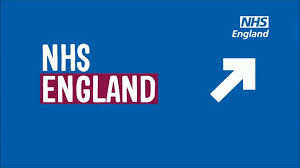 From 1st April this year, NHS England contains 211 Clinical Commissioning Groups (CCGs), supported, to a lesser or greater extent, by 19 Commissioning Support Units (CSUs). It is these CSUs that could be the focus of IT suppliers’ attention since by 2016 they will all be ‘externalised’, i.e. become independent organisations. IT suppliers could outsource most or all of the functions of CSUs. But, beware, the ‘outsource’ word is taboo in the new NHS, hence ‘externalisation’ is preferred. To be fair, externalisation implies a more diverse model than traditional outsourcing. For example, a ‘social enterprise’ could provide CSU functions, rather than a mainstream outsourcing company. There will probably also be opportunities for strategic partnerships and joint ventures.
From 1st April this year, NHS England contains 211 Clinical Commissioning Groups (CCGs), supported, to a lesser or greater extent, by 19 Commissioning Support Units (CSUs). It is these CSUs that could be the focus of IT suppliers’ attention since by 2016 they will all be ‘externalised’, i.e. become independent organisations. IT suppliers could outsource most or all of the functions of CSUs. But, beware, the ‘outsource’ word is taboo in the new NHS, hence ‘externalisation’ is preferred. To be fair, externalisation implies a more diverse model than traditional outsourcing. For example, a ‘social enterprise’ could provide CSU functions, rather than a mainstream outsourcing company. There will probably also be opportunities for strategic partnerships and joint ventures.
For a list of the current 19 CSUs, with managing directors email addresses, follow this link.
How Big?
CCG’s will have huge budgets: £65 billion ($100 billion) of the total NHS spend of £95 billion ($146 billion)! That’s £1,226 per man, woman and child in England. Of that, just £25 per capita will be spent on ‘management’, and it is anticipated that an average of £9 per capita will be spent commissioning services from CSU’s. Thus, an average total CSU spend of £477 million ($734 million) per annum. The range is £5-15 per capita. Therefore, the maximum opportunity if all CSU functions were outsourced across the whole of the NHS in England would be £795 million ($1.223 billion) per annum. Contracts will last 18-60 months. Phew!
What do CSUs do?
CSUs will provide a range of services from business intelligence, procurement support and back-office functions. Design of health services will also be driven by CSU’s. Some CCGs will rely heavily on CSUs, others less so. The full extent of ‘externalised’ services is not yet known and will probably be determined by success and political considerations.
Next steps?
It looks like CSU externalisation is a fantastic opportunity for IT suppliers. I believe there is the required expertise within the industry to provide an excellent CSU service to NHS England. It plays to their established strengths and the strategic industry themes of big data and analytics, cyber-security and cloud computing. So, what needs to be done to press this opportunity?





